Eric's Insight: China-Laos railway blazes new fields for regional cooperation
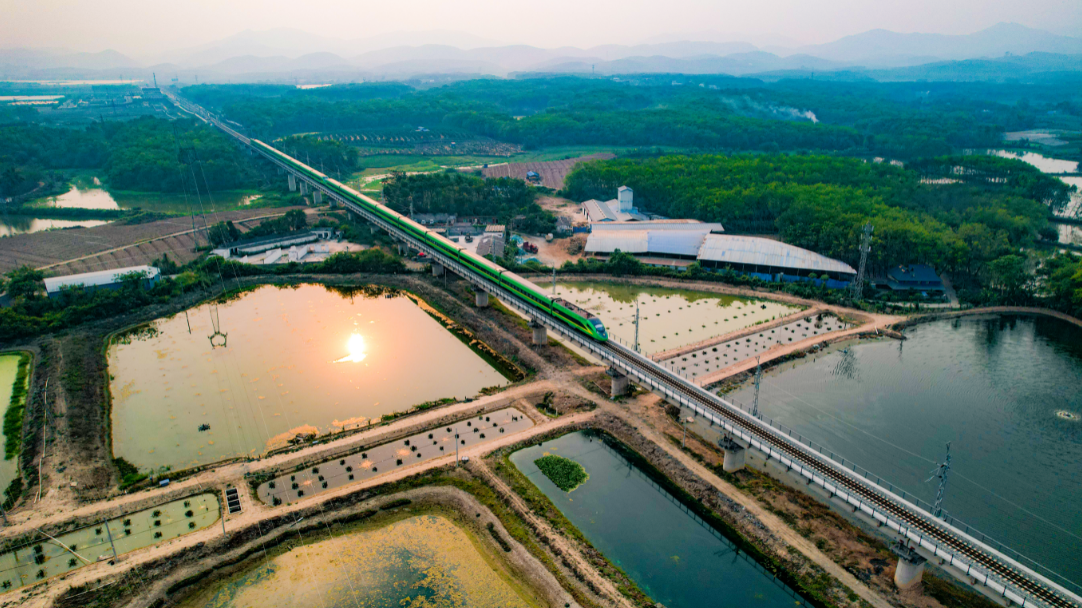
A passenger train runs on China-Laos Railway
December 3, 2023 marks the two-year anniversary of China-Laos Railway. As a signature project of the Belt and Road Initiative (BRI), the international railway has facilitated 24.2 million passenger trips and transported 29.1 million tons of cargo since its opening on December 3, 2021, blazing the new fields of logistics, folk communication and industrial migration for regional exchanges and cooperation.
Logistics by Lancang-Mekong express trains
China-Laos Railway, first of all, means more cargo flows in the Lancang-Mekong countries and the south-southeast Asian region at large. Shortly after the opening of China-Laos Railway, the Lancang-Mekong express trains were launched via the railway in January 2022, and operated twice a week, the direct freight trains cut the Kunming-Vientiane freight time to 26 hours.
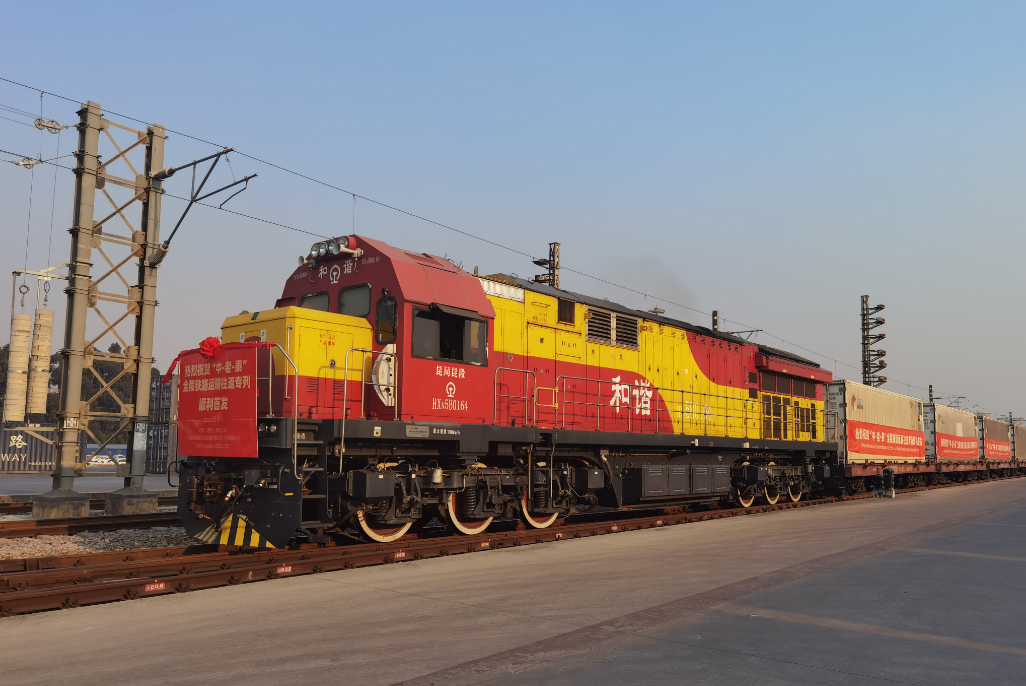
First train for the China-Laos-Thailand freight service
With the beginning of the China-Laos-Thailand freight service in February this year, the Lancang-Mekong express trains were extended southward to Bangkok, transporting Chinese goods to the Thai capital in 55 hours. Zhao Zhe, head of the Manyang Agro-technology Company in Yunnan, said they used Lancang-Mekong express trains to transport flowers to Thailand and the freight service turned out to be much faster. From April 16 on, the Lancang-Mekong express trains have been operated on daily basis to transport fruits and vegetables from Southeast Asia.
In July, the Lancang-Mekong express trains were connected northward to the China-Europe freight trains, allowing the Thai goods to reach Poland, Hungary and other European countries and cutting the logistics duration by 15 to 20 days. By the end of August, CRIntermodal Kunming has operated 316 Lancang-Mekong freight trains, greatly facilitating cargo flow between China and the Mekong countries, as well as between south-southeast Asian countries and European countries.
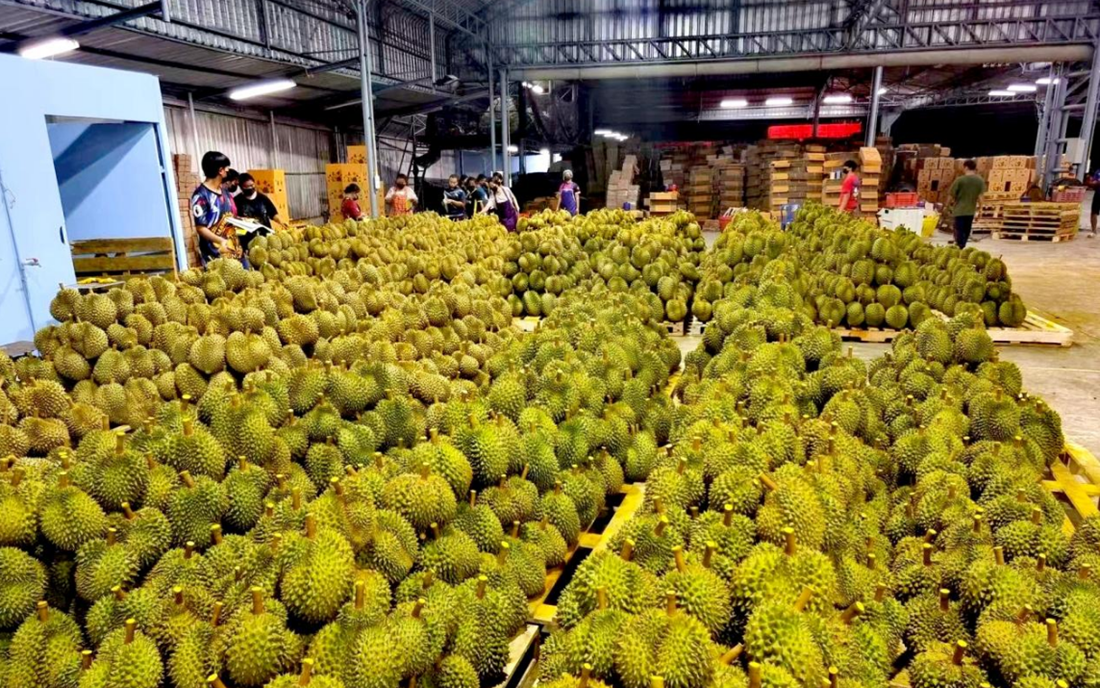
Thai durians enter Yunnan market via the Lancang-Mekong express trains.
Folk bonds via Kunming-Vientiane direct trains
For more than one year, the Kunming-Vientiane train trip had to be completed by two trains on the railway’s Chinese and Lao sections due to the Covid impact. However, the Kunming-Vientiane direct train service on the China-Laos Railway was launched for international passengers on the occasion of the 3-day water festival or the Hinayana Buddhist new year in April 2023, triggering a surge of cross-border tours between China and the Mekong countries and enhancing people-to-people bonds in the region.
"This is definitely a once-in-a-lifetime experience to me. I'm ready to meet local people in Laos, and start learning their customs and cultures during the Lao new year festival." Ms. Chen was one of the many Chinese tourists who chose to take D887 -- the very first cross-border passenger train on China-Laos Railway -- from Kunming to Vientiane on April 13. Another tourist Liu Jin, native to northeast China's Liaoning province, had already been to Laos for 8 times, but that day he specially took his mother to Laos for the festive air in Luang Prabang, Vang Vieng and Vientiane.
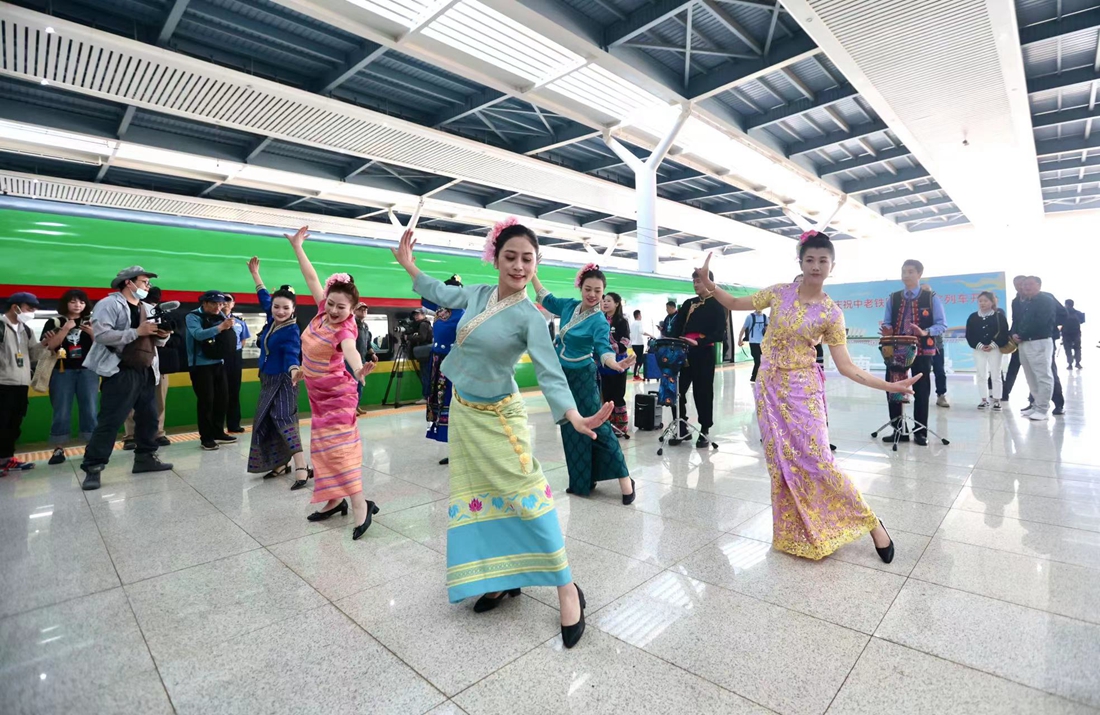
A performance is staged for the launch of the Kunming-Vientiane international passenger train.
The railway’s uplift to Lao tourism is obvious. “This year, Luang Prabang ushered in the liveliest water sprinkling festival in the past three years. I am very proud of the changes brought to my hometown by the China-Laos Railway,” said Mr Bounthavi, a translator for the China-Laos Railway Station Building Project. As of December 5, more than 100,000 cross-border passengers from 75 countries and regions have used the Kunming-Vientiane direct trains.
Industrial migration from Shanghai-Kunming-Vientiane freight service
On the basis of China-Laos Railway, the Shanghai-Yunnan and Lancang-Mekong international freight trains were launched in Kunming, Yunnan province on October 8. Jointly initiated by Yunnan and Shanghai, the Shanghai-Kunming-Vientiane freight service will instill vigor into the regional economic circulation and industrial transfer.
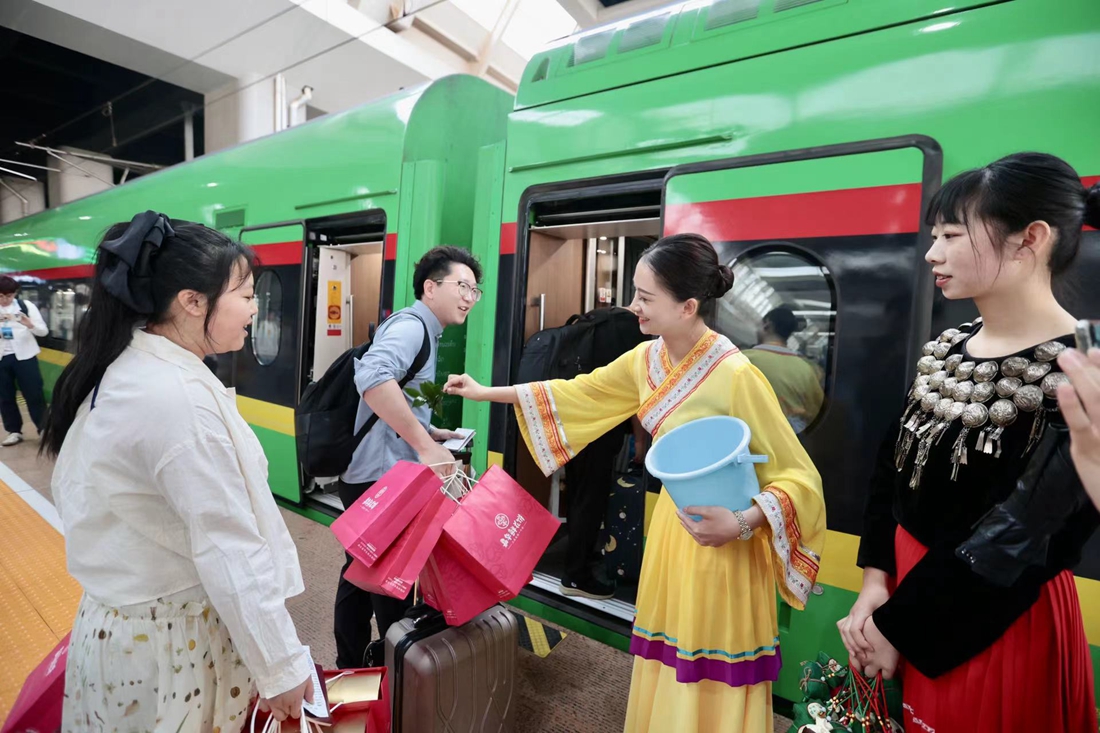
Passengers are greeted with water drops as a blessing, on the occasion of the water festival.
Industrial transfer means that under the backdrop of market economy, certain enterprises in developed regions adapt to the changes of regional comparative strengths and thus transfer part(s) of their industrial production to developing regions through cross-regional direct investment. By adjusting the spatial layout of industries, industrial transfer optimizes regional economic structure and inter-regional economic relations.
China currently adopts the “dual circulation” economic landscape that takes domestic development as the mainstay and calls for the domestic and international markets reinforcing each other. Under such an economic development paradigm, the Shanghai-Vientiane direct freight service via Kunming will deepen the economic cooperation between east China and west China and make Shanghai and Yunnan complement each other. More Shanghai high-tech industries are expected to move to Yunnan for the promising markets in ASEAN and South Asia.
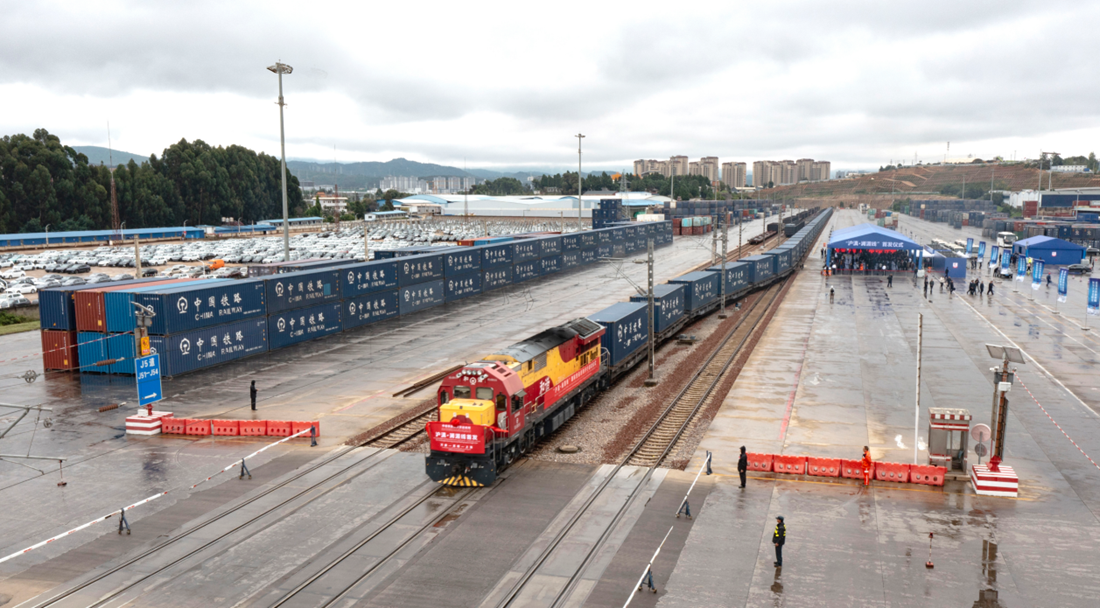
First train for the Shanghai-Kunming-Vientiane international freight service leaves Kunming for Shanghai.
On December 3, the Shanghai-Yunnan Lingang Science Park opened in Kunming on the occasion of the railway’s second birthday. At the park’s opening, Li Mingcheng, sales director of Shanghai Jizhen Intelligent Technology, said the company plans to build a factory in Mohan for exporting 3D printing products. While Jiang Haitao, water-treatment director at the Shanghai-based ProMinent Group, said he’ll use the China-Laos Railway express trains to sell their smart drinking-water purification system to Yunnan, Laos and other neighboring countries.
Writing by Wang Shixue; Proofreading by Zu Hongbing and Wang Huan; Photos: Yunnan Daily








